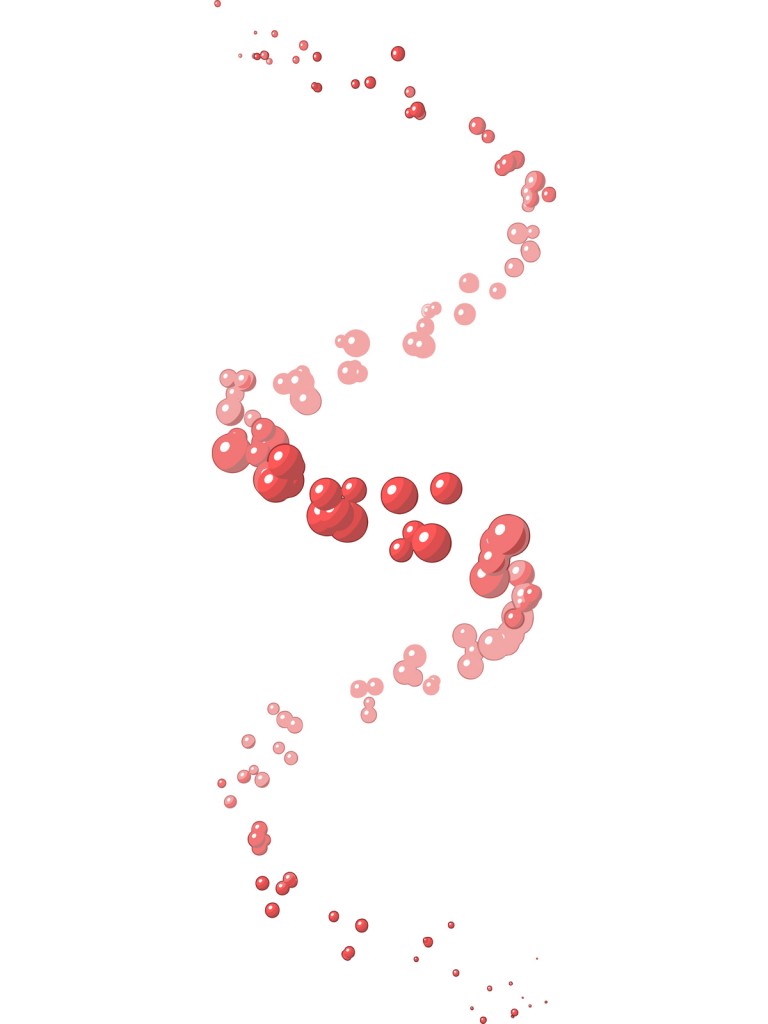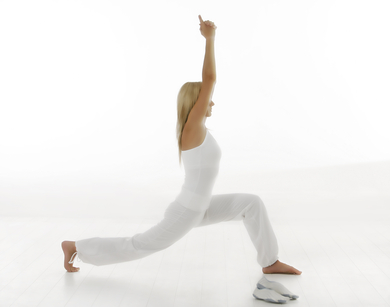Eat Like a Woman: Does Science Support a Different Food Paradigm?
When it comes to science and research, women have long gotten the short of end of the stick. Not only have women been historically excluded from medical research trials, but despite National Institutes of Health regulations mandating the inclusion of women and minorities in clinical trials in order to obtain funding, research on women’s health has continued to lag behind their male counterparts’. Only recently has this issue reared its head again as findings from March, 2014 The Women’s Health Summit demonstrate important disparities in the scientific process that highlight one of the most important issues facing women today:
“When we fail to routinely consider the impact of sex and gender in research, we are leaving women’s health to chance. The evidence on sex differences in major causes of disease and disability in women is mounting, as are the gaps in research.”
Not only are women routinely excluded from research on cardiovascular disease (despite its ranking as the number one killer of women, only 1/3 of clinical trials enroll women and only 1/3 report on sex-specific outcomes), but, women suffer twice as often from depression and yet, fewer than half of laboratory studies utilize female animals to evaluate metabolic differences. And these examples are the tip of the iceberg!
So, it’s no surprise that these gender differences also affect nutrition.
As my friend and menopause colleague Staness Jonekos points out in her new book, Eat Like A Woman (and never diet again): 
- It takes women’s stomachs’ an hour longer than men’s to empty after eating.
- For the most part, women have lower energy expenditure than their male counterparts due mostly to differences in body composition; notably, estrogen plays a major role in energy expenditure, appetite and body weight. An imbalance in hormones that are secreted by one gland can affect hormone levels in other glands.
- The thyroid, which Staness refers to as the ‘Metabolism Mama,’ is important for metabolism, energy, grown and development and the nervous system. When it’s out of whack, it can wreak havoc on weight, appetite and even mimic the symptoms of menopause. Moreover, research has demonstrated a direct interaction between estrogen and direct expression of thyroid sensitive genes; what this means is that if you are using hormones to manage your menopausal symptoms, you’ll want to have your thyroid checked.
- Cortisol, which I’ve written about frequently on Flashfree, is another important player. Produced by the adrenal glands,its primary role in the body is to regulate energy (by producing blood sugar or metabolizing carbohydrates, protein and fats) and mobilize it to areas where is it most needed. Research has shown, however, that women have higher cortisol levels than men, and that certain women –especially those with greater amounts of abdominal fat — may be reacting to a large disruption in the release of cortisol that causes a greater than normal difference between morning and evening levels of the hormone. This disruption is believed to be related, at least in part, to exposure to prolonged physical and mental stress. The psychological component is huge, because it tends to trigger the desire to consumption of food that is high in fat and/or sugar, which also tends to promote abdominal weight gain.
- Staness also writes about the role of neurotransmitters, chemicals released by nerve cells that carry messages between the brain and organs. They can affect mood, appetite, sleep, heart rate, appetite and weight, among other functions. Poor dietary habits (low intake of dietary protein, poor carbohydrate choices or minimal omega-3s, for example) coupled with hormonal imbalances and excessive alcohol or caffeine can lead to neurtransmitter imbalances. The bottom line? Hormonal changes may affect the actions of neurotransmitters, which in turn, affect mood and lifestyle choices. Staness further explains that lifestyle habits can affect hormones, thereby affecting neurotransmitters. Think of an endless loop: chronic stress triggers cortisol, causes weight gain, cravings, affecting serotonin levels and thyroid functioning, which then influence metabolism, cholesterol, etc. WOW!
- Women’s digestion is also distinct from a man’s, in that we taste food differently. Staness explains that women are ‘supertasters,’ with varying sensitivities to bitter flavors depending on hormone levels. Women also have a higher risk for irritable bowel syndrome, acid reflux, acid related ulcers and other conditions due to the size of the esophagus, small intestine, colon and rectum.
Staness writes that “there are many confusing messages about what to eat or not eat surrounding us,” and she poses a critical question: “how can one message or one plan apply to everyone? We are all different and yet our basic needs as women are the same.” Toward that end, she offers up a dietary plan that supports women’s health through each life stage and addresses various dietary controversies, ranging from soy to animal protein to salt to caffeine. And, she reintroduces the food pyramid that she says, is one of the biggest factors contributing to the success of her previous book, The Menopause Makeover. Notably, for all you paleo people out there, the ratios that Staness recommends are similar to the average portions consumed by our Stone Age relatives. The key?
- 25% of your calories should come from healthy fats
- 35% of your calories should come from low-fat, lean protein
- 40% of your calories should come from low- to medium-glycemic carbohydrates
Staness’ program is served up in three steps that includes approaches to meals, healthy emotions and exercise. However, she doesn’t stop there; she’s reached out to her favorite celebs and chef for recipes that should please any palate. And if you are seeking even more information, Staness offers additional tools and resources on her website .
What do you get when you combine sound science and nutrition? A plan that makes eating make sense…for women. Isn’t it time to change the paradigm? This seems like an awfully great place to start.
About Staness…
Staness Jonekos is an award-winning television writer, producer, and director, as well as an author and writer on women’s health issues. Her first book, The Menopause Makeover, was a pioneering work in the field of menopause, a highly visual and inspiring survival guide that challenged the conventional, old-style approach to managing menopause. She is a tireless advocate for women’s health, wellness and empowerment. She has appeared on The Today Show, contributes to The Huffington Post, and has been featured in a variety of publications ranging from The Houston Chronicle to More.com. Her co-author, Marjorie Jenkins, MD, FACP is a Professor in the Department of Internal Medicine, Division of Gender-Specific Women’s Health Director and Chief Scientific Officer, Laura W. Bush Institute for Women’s Health Associate Dean for Women in Health and Science. Her motto? “You have to know the difference to make a difference.”
Read More
Life quality and yoga
Perimenopausal? Menopausal? Are you having difficult sleeping, mood swings, lack of focus and diminished energy? How’s your sexual functioning?
Take one look at that list of woes and it’s no wonder that women sometime want to tear their hair out during menopause. However, there is evidence that attenuating symptoms can help improve quality of life and that certain interventions, including exercise, yoga and/or omega-3 supplements can help.
Medical experts continue to question the value of these interventions during the ‘pause, citing a lack of scientific evidence and conflicting study results. Some even go so far to refer to strategies other than hormone replacement or some other pharmaceutical intervention as ‘snake oil.’ Yet, data continue to evolve that thinking outside the HRT box may help some women and it is for this reason that I wanted to share some newly-published study findings with you.
This latest MsFLASH (Menopausal Strategies: Finding Lasting Answers for Symptoms and Health) study examined 338 women who were randomly assigned to 12 weeks of studio and in home yoga, tri-weekly 40 t0 60 minutes moderate-level cardiovascular training sessions or usual activity. The women were also given and asked to take a daily omega-3 or placebo capsule. Consequently, they were asked to score factors that impact quality of life during menopause, things like vasomotor symptoms, physical functioning, pyschosocial impact and sexual functioning.
The results?
Women who practiced yoga appeared to achieve small but still greater improvements in their overall quality of life (on the basis of the factor scores mentioned above) versus the other inventions. Moreover, it appeared that yoga reduced the extent to which women found their hot flashes bothersome or interfering with daily functioning. Apparently, neither exercise or omega-3s impacted these measures.
The reason for this potential improvement has to do with yoga’s theoretical impact on how balanced the sympathetic nervous system remains in the face of midlife stress and hormonal imbalances. Yoga may help maintain balance and how well or positively we perceive the world around us.
Despite the small, incremental benefit provided by yoga versus exercise or omega-3 supplementation alone, it’s important to emphasize that very few studies have focused on quality of life specifically as it relates to yoga. And, while previous studies have shown benefit, getting women to ‘go the distance’ during these studies has proven difficult.
Mind you, by no means do these study findings suggest that you should give up exercise or omega-3s and switch to yoga. Both of the former strategies have their own benefits. But you may want to consider your quality of life and actions to improve it during menopause and beyond. Yoga practice may be an important part of the puzzle.
Read MoreNew Year? New You!
Want to know one of the most important resolutions that you can make? Commit to you!
I write about a lot of topics on Flashfree but the overriding theme is health and the importance of taking care of yourself. And no one can do that better than you can, that is, once you make a commitment to become healthier and identify strategies that work best for you. There are four tips that I’d like to offer to help you get over the initial hump.
- Move. I can’t emphasize the importance of physical activity enough. From bone health to heart health to mental health, it is the one accessible, equal opportunity strategy, regardless of income or geography. Because even if you don’t have entry to the gym, you can walk, run, bike, step, or engage in other activities that don’t require a membership or a monthly fee. In addition to counterbalancing the calories that you ingest daily, simply simply engaging in vigorous physical activity, i.e. 7 days of a combination of moderate intensity/intense activities that add up to 3000 MET minutes a week) can significantly decrease menopausal symptoms, in particular fatigue, depression, insomnia and hot flashes. (Activity level is scientifically measured by units known as METs, or metabolic equivalents; vigorous activity is equivalent to 8 METs and moderate activity to 4 METs).
- Be conscious. My grandmother used to say ‘everything in moderation.’ When it comes to diet, I don’t engage or believe in deprivation but I do try to balance out the occasional junk and sweets with healthy, daily doses of vegetables, fresh fruit, lean proteins and fiber. Researchers say that what you eat is extremely important. In a study of over 500 women, the strategy that worked best, leading to an average weight loss of 17 pounds over six months, entailed boosting intake of soluble fiber, fruits, veggies, whole grains and sources of plant stanols/sterols (i.e. almonds, brussel sprouts, wheat germ/bran, peanuts, olive oil and omega-3s). However, they also started moving more and adding regular, moderately intense activity to their daily routines.
- Engage. Want to know the key to health and wellbeing? Your friends. Data from a study published in Psychological Review in 2000 suggests that women’s inherent response to stress is to ‘tend and befriend’ rather than ‘fight or flight;’ in other words, there is a biologically-defined strategy or pattern that involves caring for offspring, joining social groups, and gravitating towards friends under stressful circumstances. This is driven, at least in part, by the release of the hormone oxytocin, which coupled with endogenous opioids and other sex hormones, promotes maternal behavior as an alternative to the male-oriented fight and flee response. Other findings have also shown that friendships help prevent the development of physical impairment and facilitate a more joyful existence. What’s more, having a strong social network can lower blood pressure and heart rate and improve cholesterol levels. The bottom line? Nature has provided us with a built-in prompt to maintain those ever important bonds. Our inherent tendency to nurture completes the picture.
- Laugh. Several years ago, researchers discovered that humor therapy and anticipation of laughing or being amused (also known as mirthful laughter) boosts mood hormones and raises human growth hormone (which optimizes immunity levels. Mirthful laughter has been shown to lower stress hormones and improve the functioning of certain cells – natural killer cells – that favour immune function. Daily laughter also helps lower cholesterol, decreases inflammation that contributes to disease and improves overall wellness. A good belly laugh goes an awfully long way. That funny bone? Seek it out.
NewsFlash! Can fish oil supplements help prevent skin cancer?
Omega-3s. When it comes to a buzz, it keeps growing louder and louder. And while I’ve observed the buzz between a reduction in skin cancer risk and fish oils for some time now, the studies showing positive benefit have been done in rats, which makes it difficult to apply findings to humans. That is, until now.
Researchers from the University of Manchester in England published a paper in the American Journal of Clinical Nutrition online this past January that explored the first study of omega-3s and skin cancer in humans. And while the study is small, it’s a first step towards what could possibly be very good news for many .
For context, UV radiation (UVR) causes the majority of non-melanoma skin cancers and the incidence of these cancers continues to rise in particular, among white and lighter skinned individuals. Researchers believe that sunlight suppresses the ability of cells and the immune system to fight off skin cancer and infection, therefore allowing them to proliferate and cause cancer. This is one reason that people with diseases that suppress the immune system are more prone to developing cancer. However, there is some evidence that diets that are rich in omega-3 fatty acids are associated with reduced risk of skin cancer, perhaps as a result of how they benefit immunity.
The study included 73 women between the ages of 18 and 60 who sunburned easily with no or very little ability to tan. These volunteers either took 4 g of omega-3s daily (70% EPA, 10% DHA) or a placebo pill for 12 weeks and were exposed daily to 8, 15 or 30 minutes of simulated sunlight (via a special light machine). The results? Among women exposed to sunlight for 8 or 15 minutes a day, taking omega three supplements appeared to shut down immune suppression by as much as 50%. However the greater the sun exposure, the less effect omega-3s had, as the researchers did not observed the same protection among women who had 30 minutes of sun exposure daily .
The researchers say that the findings are important because most people apply sunscreen inadequately and don’t wear it daily. So, boosting daily omega-3 intake may potentially help protect against skin cancer, so long as sun exposure is limited. Still, bear in mind that omega-3s are not replacements for sunscreen; rather, consider them part of your armor against cancer. Meanwhile, we need bigger studies to see if these initial findings can be borne out in larger numbers of people.
Stay tuned. Whatever you do, omega-3s are good for your heart and perhaps, for you skin as well!
Read MoreWednesday Bubble: It’s in the DNA, right?
 Aging, it’s in the DNA, right?
Aging, it’s in the DNA, right?
Actually, it’s a bit more complicated than that, but it appears that the length of your telomeres may be an important key.
Telo what?
Telomeres are little caps at the end of chromosomes that keep your genetic information intact and stable. In a sense, the body created telomeres to protect our genetic information and insure that it’s passed down to the next generation. Their gatekeepers are an enzyme called telemorase, and it insures telemere health. And while the length of our telemeres tend to shorten as we age, factors like health behavior, disease and exposure to internal inflammation and oxygen free radicals in the blood can also affect their length and stability, and promote illness that give aging a bad name in the first place.
Fortunately, it’s not all about genes. In fact, researchers now say that taking adequate amounts of omega-3 fatty acids may actually improve the odds.
Indeed, when researchers provided different doses of omega-3s (or placebo pills) to 106 healthy but sedentary middle aged men and women and asked them to take them daily for four months, they found that significant and beneficial changes in telomere length. The low down:
- Participants took 2.5 g daily or 1.25 gram daily of omega-3 fatty acids (in a ratio of 7:1 EPA/DHA since EPA has shown to have stronger anti-inflammatory effects than DHA) or placebo. The placebo contained a mixture of oils designed to mimic the amount of fats that US adults typically consume in a day.
- Both groups of people taking omega-3s showed significant declines in the amount of inflammation in their body.
- The ratio of omega 3 and omega 6 were important: in fact, the lower the ratio, the longer the telomeres.
The researchers say that on average, most Americans consume a diet of omega-3s in a ratio that’s skewed towards omega-6, which comes in the form of vegetable oils im most people’s diets. The average diet tends to be low in omega-3s, the fatty acids typically found in cold-water fish like salmon or mackerel. But when the average ratio of omega-6/omega-3s is lowered from about 15:1 to 4:1 or 2:1, there are benefits to be had. In this case, the benefits are in the form of longer telomeres and in turn, the potential to reduce the risk for age-related diseases.
In a related press release, study co-author Ron Glaser makes an analogy to shoelaces, explaining that short fragments of DNA, telomeres, act as caps at the end of chromosomes,much like the protective plastic at the end of a shoelace. “If that plastic comes off, the shoelace unravels and it doesn’t work anymore. In the same way, every time a cell divides, it loses a bit of its DNA at the ends and over time, can cause significant problems.”
The bottom line is pretty clear: change your omega-3 ratio and you may change your aging odds. Sounds like a win-win.
(This study appears in the advanced online edition of Brain, Behavior and Immunology).
Read More









